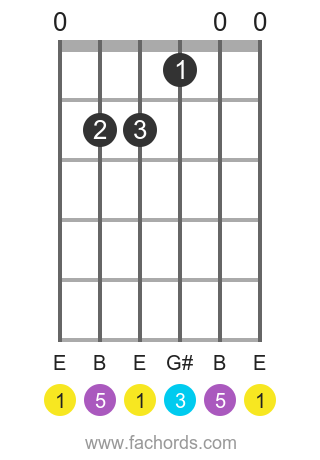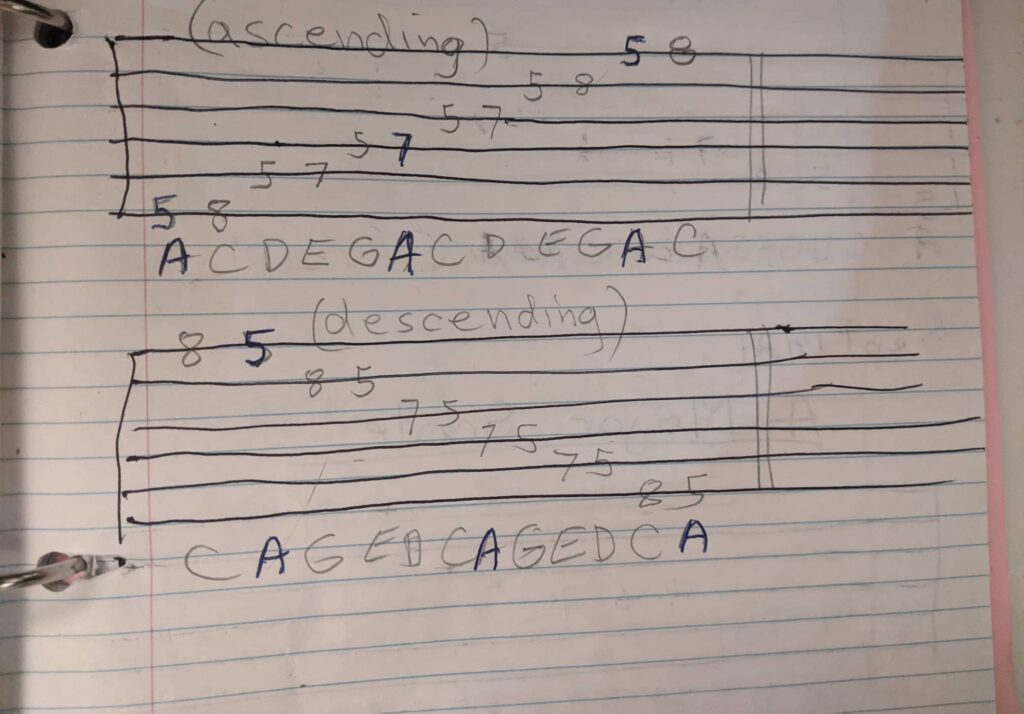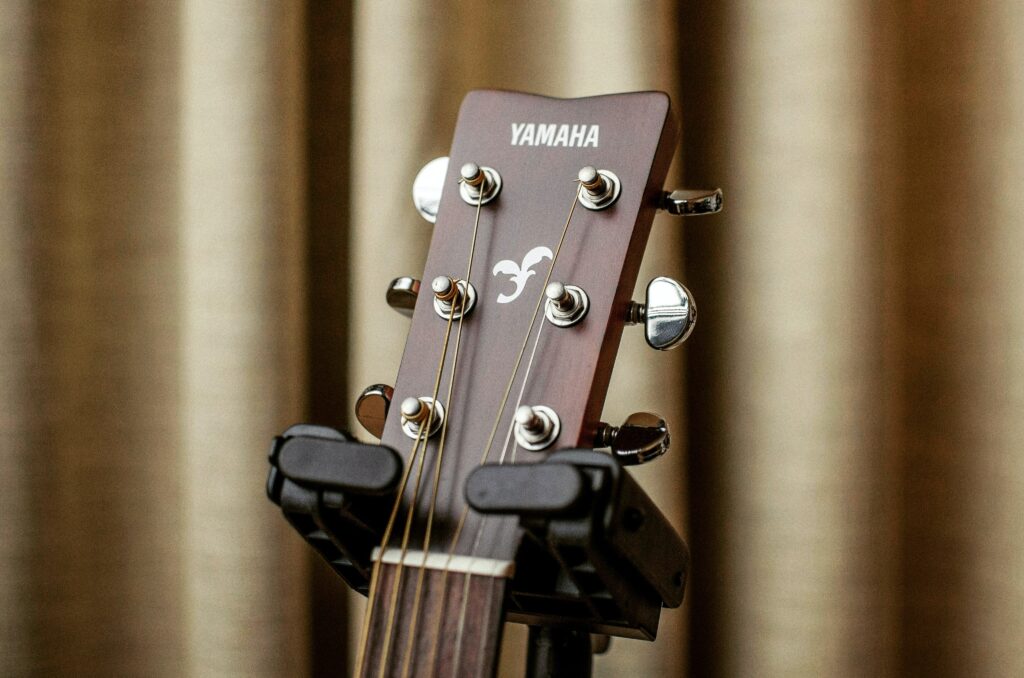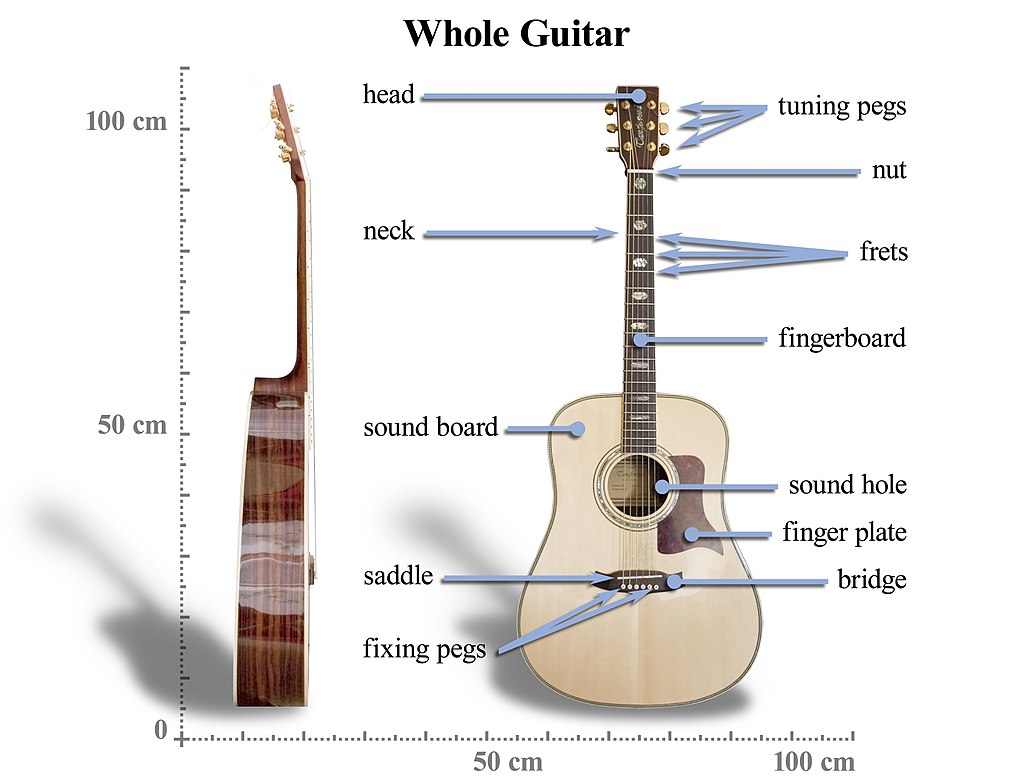Barre Chords
According to https://en.wikipedia.org/wiki/Barre_chord,
“In music, a barre chord (also spelled bar chord) is a type of chord on a guitar or other stringed instrument played by using one or more fingers to press down multiple strings across a single fret of the fingerboard (like a bar pressing down the strings).”
If you remember what we learned about building chords from the last post, this is just another fingershape for building chords.
It looks like this for a Barre chord in G,

Note how the first finger acts as a ‘bar’ across the fretboard. If we remember that the 1st and 6th strings are both E, by pressing across them at the same place we create two of the same note, one octave apart. In the photo, I am pressing at the third fret which creates 2 G notes. This becomes the Root of the Barre chord, so in this picture, I am playing a G barre chord.
I’m terrible at them because they are super hard to get your fingers to do properly but here’s what it (sorta) sounds like, I caution you before listening…
If you can’t wrap your head around it here’s a tab showing what I mean
![G Chord Guitar - [ G Major Chords Guitar Finger Position & Variations ] -](https://www.guitarrepairbench.com/wp-content/uploads/2019/08/g-major-barre-chord-guitar.jpg)
Cheers!
Rick










